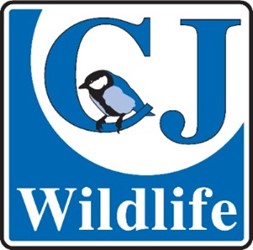After mock exams I have been feeling rather deflated and lacking in inspiration, however whilst reflecting on my week I thought about how I could make exams more bearable. With real exams looming in the future, and university coming over the horizon in September (yay!) I really need the motivation to complete my exams and achieve my grades. Where better to find inspiration than the everyday wildlife which we see regularly?
I started my quest for knowledge with birds, and particularly their vision. Humans can often forget that the world we see isn’t the same as the world in which other organisms are seeing; birds are an example of this. The house sparrow (passer domesticus) has twice as many photoreceptors per mm2 than humans, with 400,000. This means that they are more sensitive to light and dark changes (due to more rod cells) as well as increased sensitivity to red, green and blue light (thanks to the cone cells). This density is crucial for determining the maximum attainable acuity (which basically means the ability to resolve fine image detail), meaning that house sparrows can see twice as much detail in their environment than we can- amazing!
Another interesting factor of avian vision is that the cone cells (one of the photoreceptors) have an oil droplet which acts as a filter for light by removing some wavelengths. This means that, even in the range of light which us humans can see, passerines can detect colour differences that the human eye and brain can’t register. This means that life in the world of a bird (there are slight variations depending on species) is more colourful than ours, even being able to see ultra-violet light (because a fourth type of cone cell). There are so many awesome features of the avian eye, which this video covers concisely: https://www.youtube.com/watch?v=bG2y8dG2QIM .
Next, I looked towards plants- grass is a plant which we all see everyday. You could live in a city and still be able to find some grass somewhere; it is such a hardy plant which has an interesting existence but is still taken for granted by many.
First appearing at the at the end of the Cretaceous period then rapidly extending their range in the mid-Miocene, grasses are now widespread and found in multiple forms across the world. Now grasses have evolved into a huge diversity of groups; species such as rice (oryza sativa) are one of the main components of the diet of a large proportion of the human population are so important for human life. Barley and rye are both grass species, as are bamboo and clover which demonstrates the amazing diversity of grass. Worldwide, grass is one of the main producers in the ecosystem, grazed upon by ungulates, the larvae of butterfly species like marbled white as well as by giant pandas which almost exclusively feed upon bamboo. I am truly inspired by grasses; their versatility as a group of plants and the way in which they are so key for life one earth is very impressive. The little guys are what we owe our existence to, and should definitely be thought about more often next time you find yourself in a meadow or even just passing by a small piece of grassy land.
I hope that this has provided some inspiration, although I’m sure that many of us are already inspired on a daily basis by the natural world around us. My next piece will be on inspiring people in natural history, which should yield some interesting facts about some really cool figures!


